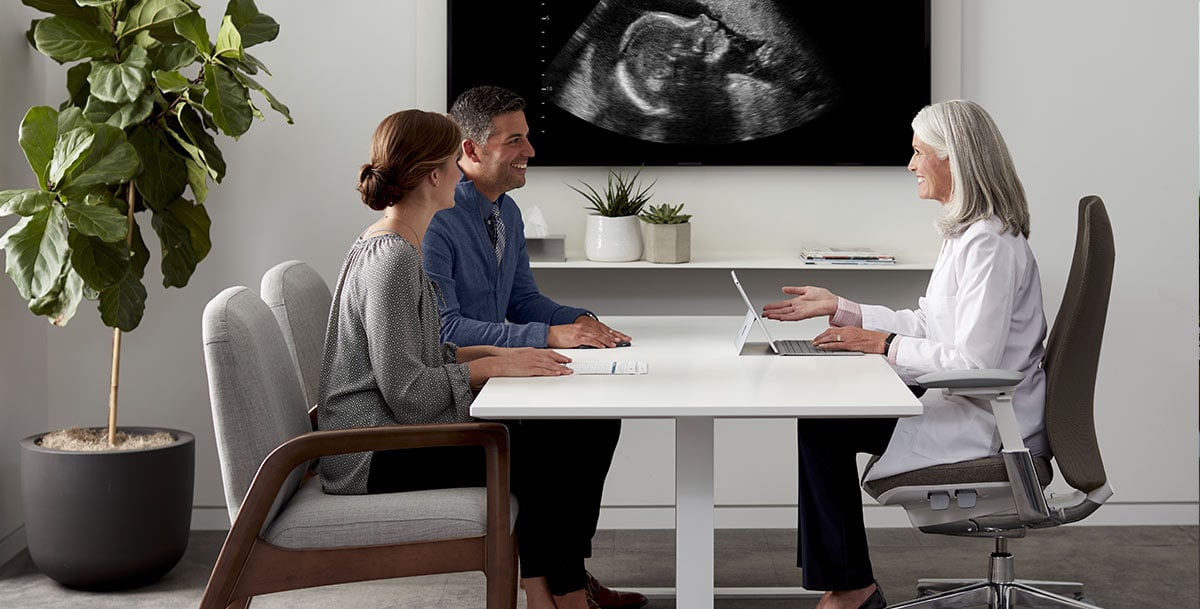
We often write about how corporations are moving towards a people-centric design approach to improve the workplace experience for their employees. The same is true for healthcare organizations and practitioners. Designers are creating spaces that cater to a patient-centric experience while also taking into consideration staff and visitors. Providing excellent patient care begins with providing spaces that provide the right environment; a place where patients, visitors, and providers feel comfortable, and where patients and staff can thrive. Below are important key healthcare design areas to focus on.
Reception
Visiting a healthcare provider can be a stressful experience. Reduce anxiety by helping patients and visitors feel more relaxed from the moment they walk through the door. Enable human interaction immediately and establish a welcoming space with an attractive reception desk and comfortable guest chairs. Incorporate natural lighting and biophilic elements, such as indoor plants or artwork with a warm, earthy color palette, for a soothing tone. Not only will these inspire patients, but they will support concierge efforts. Also, incorporate clear and simple way-finding elements to help patients and visitors easily navigate unfamiliar environments and avoid additional stress.
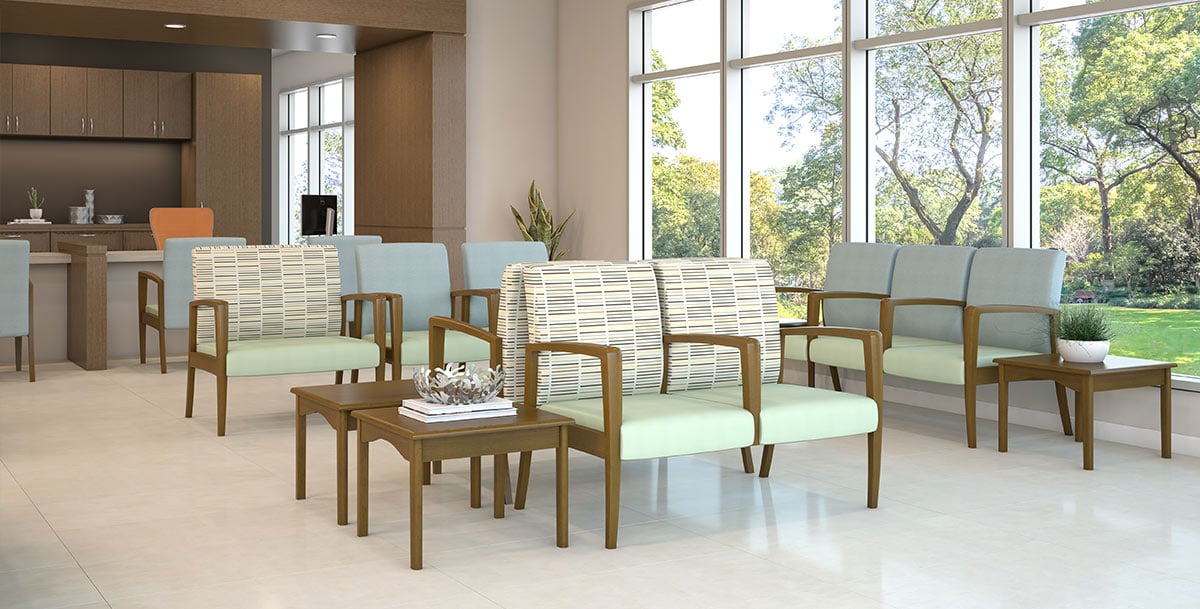
Waiting Rooms
Take a patient-centric approach to allow for human interaction immediately. Wait times can seem long. However, with comfortable furniture and a serene decor, you can ease the stresses of passing time. Taking a cue from the resimercial trend, arrange waiting rooms like a living room. Plush couches, stylish arm chairs, and appropriate accessories, such as table lamps and throw rugs, will create a cozy space. Keep materials that help prevent infection in mind, and use applications that allow people to be connected and plugged in. Be sure to consider the people a facility will be serving. For example, provide a child-friendly room where parents and children can both be comfortable, or account for variable waiting periods. Also, consider techniques for separating ill patients from healthy visitors and designs that support specific physical conditions of patients such obesity or challenges standing from low seating positions. Family members remaining in the waiting room will appreciate technology support. Be sure to consider as many people and their needs as possible.
Related Article: 7 Design Tips for Workplace Wellness »
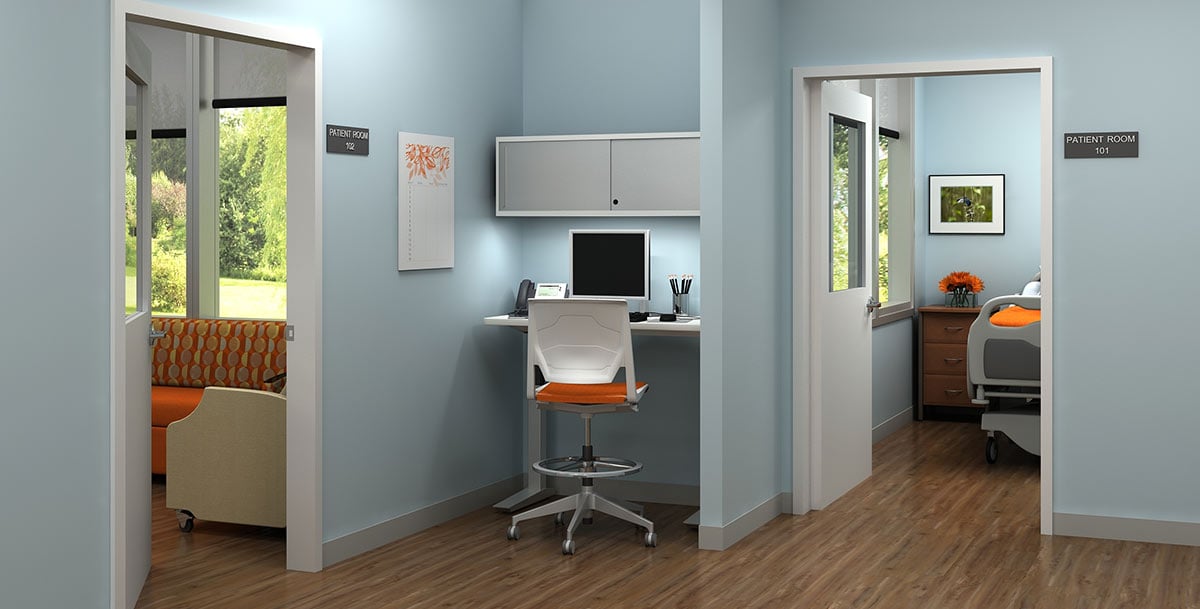
Nurses Stations
Designing functional workstations that can adapt to change is key to keeping staff healthy and productive throughout the day. For staff wellness and productivity, ergonomic chairs, height-adjustable workstations, and adjustable monitor arms, are essential. Storage is also very important. Keeping office and patient files orderly and accessible will help administrators stay organized, reduce stress, and safely maintain sensitive documents. It is important to design stations that support technology needs, both their fixed technology tools, as well as their mobile. Nurses are people, too, so it is best to provide a quiet space for gathering thoughts, taking a quick break, or making a private call.
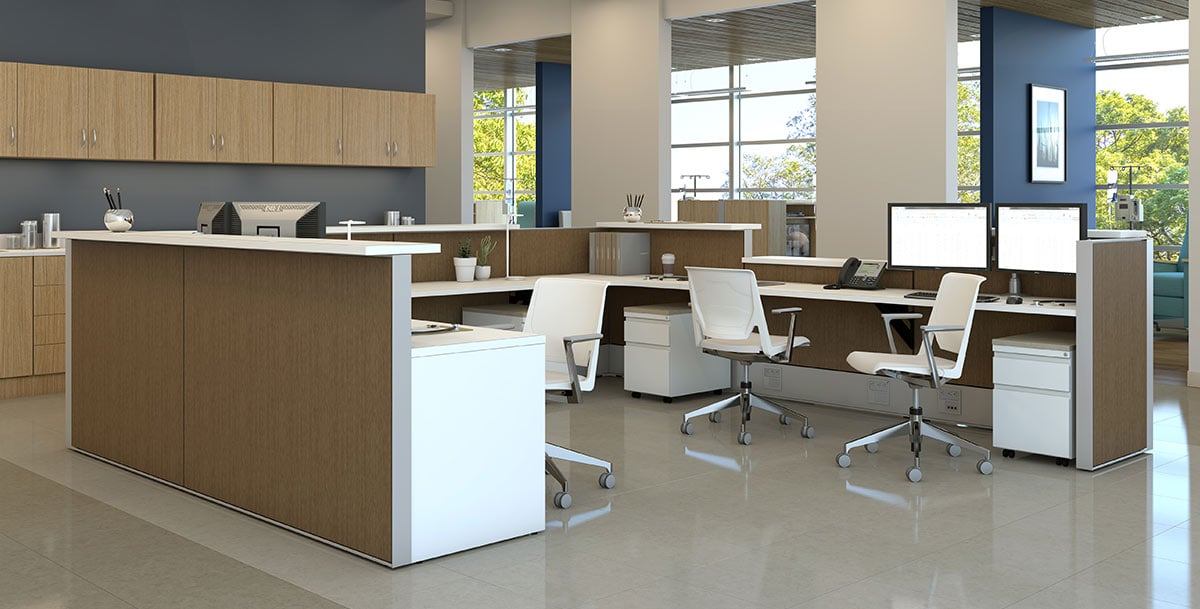
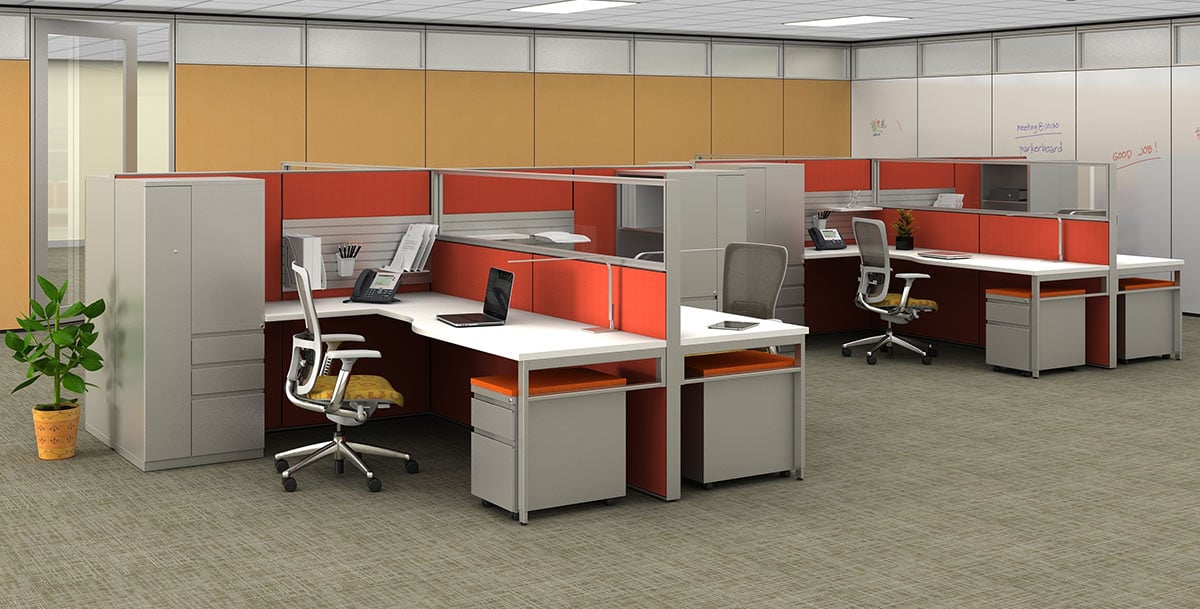
Caregivers and Administrative Offices
Offices also need to perform optimally. Desk arrangements and space layouts are critical for shared offices. Oftentimes, healthcare environments are fast-paced. Setting-up a space that allows staff to maneuver will help them tend to patients and juggle multiple tasks efficiently. Layout is just as important for private offices. Outfitting a well-functioning office, including ergonomic solutions, aesthetics, and amenities that promote wellness, while also supporting technology needs, will allow doctors and nurses to stay engaged.
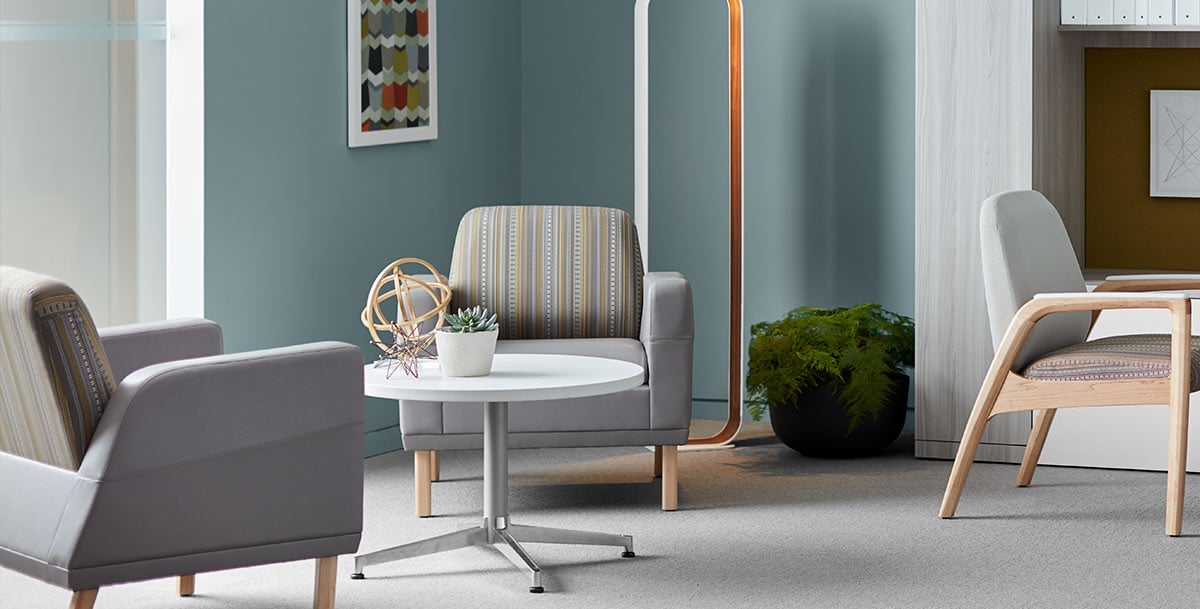
Staff Lounges
Providing social areas and places of respite are just as important as setting up a high-performing workstation. Like a corporate office, these “down time” areas offer chances for impromptu meetings, new scenery for completing charts, and a refreshing space to catch-up and connect with co-workers. Appointed with custom furniture, these areas can add new energy while communicating corporate culture and engaging staff.
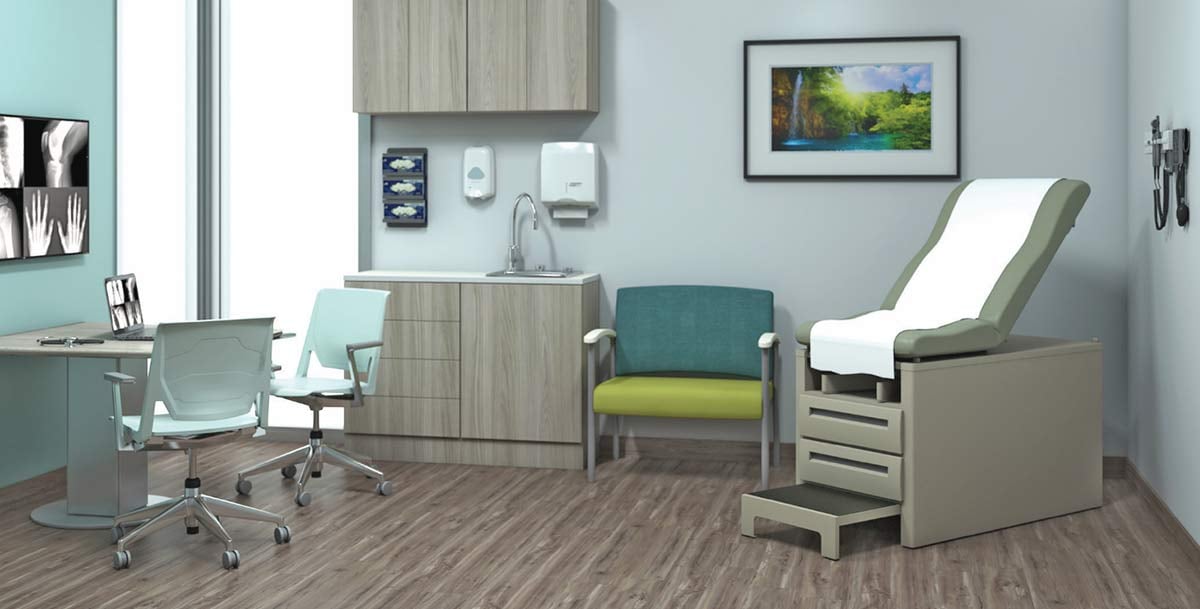
Patient and Exam Rooms
With the increasing cost of real estate, efficient use of space is crucial, so adding flexible furniture solutions that allow spaces to be easily reconfigured for multiple functions, adds value.
When designing a healthcare environment, keep in mind that medical staff have unique needs relevant to healthcare. Even more so than corporate office workers, they are under intense pressure to improve patient outcomes while reducing costs. They need space for concentrated and focused work, peer collaboration, and more discreet areas for patient consultations and sensitive staff issues.
According to a recent white paper titled Healthcare and Hospitals: Furniture Trends of the Future, by Haworth Health, "patient-centered care and evidence-based design are primary drivers for decision makers at healthcare facilities across the US." We support healthcare organizations as they change and adapt in order to meet the challenges of the evolving healthcare landscape. It’s not just interior aesthetics that we bring to the table. We offer a service support system to provide tools and resources as a “partner” in order to lead the successful completion of a facility that encourages “wellness” for patients, visitors, and care providers.
To learn how we can help with your healthcare facility design needs, contact us today.





